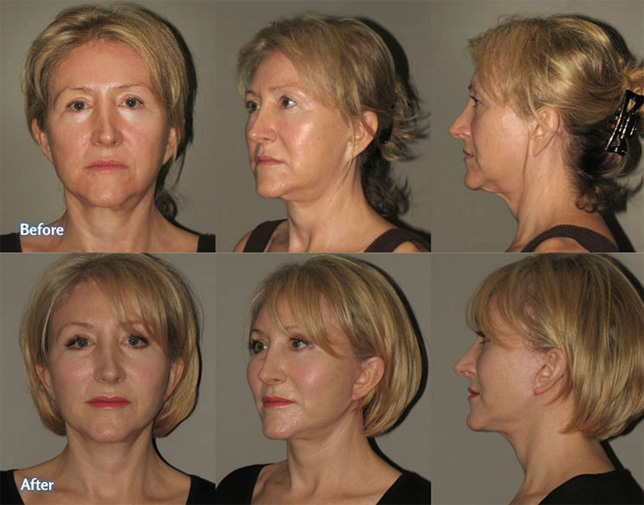Male Breast Reduction (Gynecomastia)
Gynecomastia is a condition where the male breast is enlarged by excessive glandular tissue. It may affect one of a man’s breasts or both. The condition is rarely discussed, though it may affect as many as 40-60 percent of men. More and more men are now turning to male breast reduction surgery to correct this condition, with nearly 23,000 undergoing the procedure in the U.S. in 2013, according to the American Society of Plastic Surgeons. Male breast reduction removes excess tissue from the breasts, resulting in a chest that is firmer and flatter.
About Gynecomastia
Gynecomastia is a relatively common condition among men that can affect one or both breasts. Causes of gynecomastia include some types of medications, hormonal fluctuations, genetics and some medical conditions. In some cases, the cause of gynecomastia may not be known. While some men may see this condition improve on its own, others will need to turn to treatment like surgery to reverse the condition.
Men also seek treatment for a similar condition known as pseudo-gynecomastia. While this condition is also characterized by enlarged breasts, the enlargement is not typically caused by excess glandular tissue. Instead, the larger breasts might be a result of excess skin after massive weight loss, pockets of fat in the breast tissue or simply the aging process. Pseudo-gynecomastia may also be treated with male breast reduction surgery in some cases.
Male Breast Reduction (Gynecomastia)
Options in Male Breast Reduction
Dr. Rappaport may perform male breast reduction in one of the following ways:
- Surgical removal of glandular tissue
- Removal of tissue via liposuction (often recommended for pseudo-gynecomastia patients)
- Combination of surgery and liposuction to produce the best possible chest contour
How is Male Breast Reduction Performed?
Dr. Rappaport performs male breast reduction on an outpatient basis, usually under general anesthesia. The procedure may take anywhere from an hour-and-a-half to two hours, depending on the amount of tissue to be removed. Glandular tissue is usually removed surgically first, using an incision that runs along the edge of the areola. Liposuction can then be added if necessary to remove remaining tissue or isolated fat deposits.
What is the Recovery Like?
Most patients have some discomfort after surgery, but this is easily controlled with pain medication. Swelling and bruising are common. The swelling can be reduced by wearing an elastic pressure garment for several weeks after surgery. Most patients can return to work two days after surgery if their job does not involve physical activity. Heavy exercise is discouraged for at least three weeks.
Dr. Rappaport answers questions about gynecomastia
What is involved in the initial consultation?
You will be asked to bring your medical history to your personal consultation so we can review it together. Because underlying conditions such as liver disease, use of estrogen medications or steroids have been linked to gynecomastia, I will examine both your history and your chest to rule out these obvious causes. If I detect a medical problem, I will refer you to an appropriate specialist. Depending on the degree of fat and glandular tissue involved, we will discuss the best surgical approach for you. I will also take the time to answer your questions.
What kind of scars will I have after gynecomastia surgery?
You can expect a two- to five-millimeter scar at the bottom of the areola or lateral chest wall when the procedure involves only liposuction of the fatty tissue. An extended scar along the areola might be necessary if additional breast tissue must be removed.
When can I go out in the sun?
This is a very important question. Sun can permanently affect the skin’s pigmentation, causing the scars to turn dark. In any case, it is advisable to use a strong sunblock (SPF 30 or greater) and be cautious.
Can I develop gynecomastia again?
Male breast reduction is permanent. However, significant weight gain or exposure to drugs and steroids can affect the size of your breasts.
How do I know if I need a breast lift along with a reduction?
A breast lift may be appropriate, depending on the amount of breast tissue and loose chest skin you have. In some cases, it is necessary to remove not only fat and breast tissue, but excess skin as well. When I examine you during your consultation, I will advise you on the procedures I recommend for you to achieve your desired result.
What are the risks and complications of gynecomastia surgery?
Every surgical procedure carries a certain amount of risk. Complications associated with gynecomastia are infrequent and usually minor. These risks include infection, skin injury, excessive bleeding, an adverse reaction to anesthesia and excessive fluid loss or accumulation. Gynecomastia surgery can also result in noticeable scars, permanent pigment changes or slightly mismatched breasts or nipples. Some patients experience temporary loss of breast sensation (rarely permanent) or numbness.
Gynecomastia is an embarrassing problem for men that often impacts their clothing and activity choices. If you are suffering with this condition, you are not alone. Contact Houston Center for Plastic Surgery at 713-790-4500 to schedule your private consultation with Dr. Rappaport and learn more about your options in male breast reduction surgery.
6560 Fannin Street, #1812
Houston, Texas 77030
Phone: (713) 790-4500
Fax: (713) 793-1299
Email: info@hcps.cc


